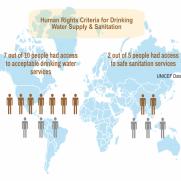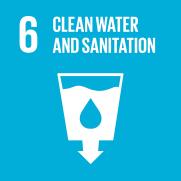 Translating Human Rights criteria into operational terms
Translating Human Rights criteria into operational terms
Translating the Human Rights criteria into action is a challenge for water and sanitation professionals, particularly for regulators. Mohamed Tawfik and the IWA Communications department for Water Policy and Regulation have procvided a helpful outline and infographics to illustrate some of the key criteria & principles in relation to drinking water supply and sanitation services.
 Key Hurricane & Flooding-Related Papers Now Open Access
Key Hurricane & Flooding-Related Papers Now Open Access
In the wake of Hurricane Irma, we’ve selected key papers from across our publishing portfolio to make Open Access for the remainder of the 2017 Atlantic hurricane season.
 What needs to change to achieve access to sanitation for all by 2030?
What needs to change to achieve access to sanitation for all by 2030?
Andrés Hueso, Senior Policy Analyst for Sanitation at WaterAid, discusses the opportunities and challenges involved in global prioritisation of sanitation and water for all.
Would the poor slum dweller contribute financially for water supply and why?
Following the publication of research from 23 slums of Kolkata, India, author Indranil De considers the willingness of different ethnic groups to pay for better water supply and the factors that affect this.
Experiences of Budapest Waterworks with state, municipal ownership structures and with the involvement of private funding
This journal author post covers some key points of a case study of Budapest Waterworks during changes of ownership and funding, considering the pros and cons of private funding and of Public Private Partnership projects in the water sector.
Transboundary water politics as processes: the ‘circle of hydro-hegemony’
In a time of global political disenchantment, author Filippo Menga shares his opinion on the politics of water.
Flood Control and Disaster Management
Flood control refers to all methods used to reduce or prevent the detrimental effects of flood waters (wikipedia). Some of the common techniques used for flood control are installation of rock berms, rock rip-raps, sandbags, maintaining normal slopes with vegetation or application of soil cements on steeper slopes and construction or expansion of drainage channels. Other methods include levees, dikes, dams, retention or detention basins. After the Katrina Disaster that happened in 2005, some areas prefer not to have levees as flood controls. Communities preferred improvement of drainage structures with detention basins near the sites.
Disaster Management
Disaster management plans are multi-layered and are aimed to address such issues as floods, hurricanes, fires, bombings, and even mass failures of utilities or the rapid spread of disease. The disaster plan is likely to address such as important matters as relinquishing people from an impacted region, arranging temporary housing, food, and medical care.
The Impact of Privatisation on the Sustainability of Water Resources
This research investigates potential contributions by the privatization of water production to sustainability of water supply. The main objective is to examine the perceptions of stakeholders concerning privatization as a water governance model and its contribution to water sustainability.
This research provides a robust reference for future planning in the water sector, hinting at the importance of considering public-private partnerships at the federal level as an appropriate model for water sustainability.